I wish I could take credit for these images, but this come from a wonderful website called An Atlas of the Universe. Richard Powell put together some wonderful graphics to display the scale of the Universe.
To understand the Universe, it is best to put things into perspective. Just how big is the Universe? It is absolutely huge!
|
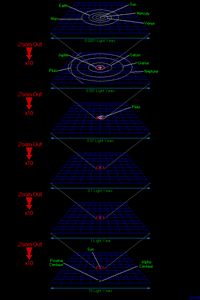 |
Our journey starts in our own backyard. While Astronomical Units (the Earth-Sun distance or 93 million miles) are used within our Solar System, this quickly breaks down as the distance to "nearby" objects increased exponentially.
A better alternative is using the speed of light as a reference. Using this scale, light takes 8 minutes to reach us from the Sun, 20 from us to Mars, and 12 hours from us to pluto. The nearest star, Alpha Centauri, is 4.36 light-years (the speed of light is 299,793 km per second).
|
|
| If we travel in any direction within 10 light years, we are only able to visit the 22 nearest stars. That is not much considering a galaxy contains billions of stars. |
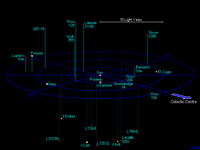 |
|
 |
Pulling out by a factor of 20 (yikes), we are able to see within 250 light years - including a larger number of stars. We are still well within our own galaxy - still within our "arm" of the galaxy. |
|
| Pulling out by a factor of 10, we are still within our own galaxy. At this level, we are able to see three arms of our galaxy: the Orion arm, the Sagittarius arm, and the Perseus arm. |
 |
|
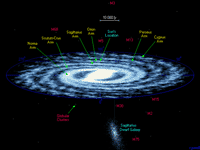 |
Moving out by another factor of 10, we are now able to see our entire galaxy - including one of the closest satellite galaxy, the Sagittarius dwarf galaxy. |
|
| Traveling out by another factor of 10, we are still in the region of our satellite galaxies, but we are now able to see the famous Large and Small Magellanic clouds - irregular galaxies visible to the eye from the southern hemisphere. |
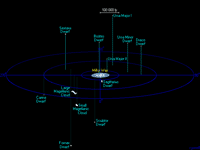 |
|
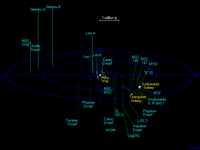 |
We have already traveled quite a bit, but even with another factor of 10 outward we are still within our local neighborhood. Here we see our closest galaxy, the Andromeda galaxy - 2.9 million light years away. |
|
| Adding a factor of 20, the visible Universe begins to take shape with the addition of many galaxies in view along with a few galaxy clusters like the Virgo cluster. |
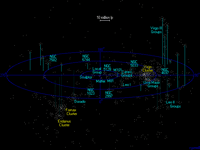 |
|
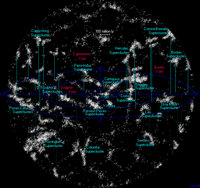 |
Strings of galaxy clusters that form super-clusters appear in view as we pull out another factor of 10. There are no individual galaxies here, only large clusters of galaxies. |
|
| The visible Universe, that is the Universe visible through a telescope, spans a billion lights years. This image, which spans a factor of 14, represents the visible Universe. |
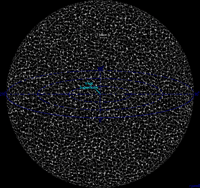 |
|
This scale only encompasses the visible Universe - there is much more beyond this.
Back to Top
|

